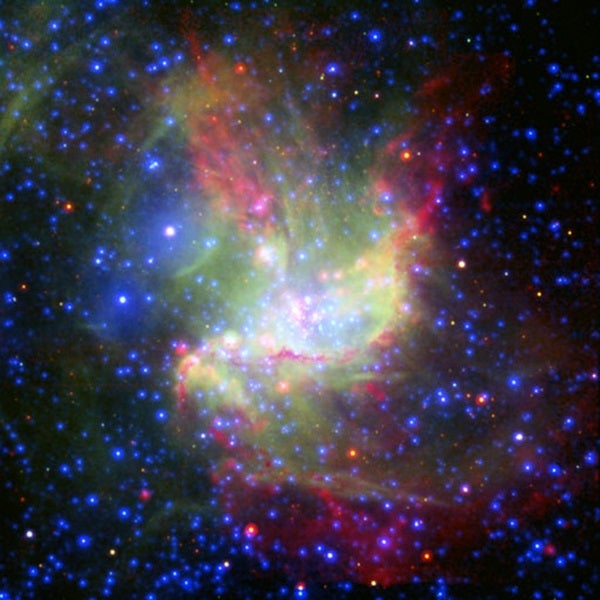Fittingly located in the constellation Tucana the Toucan, the bird-shaped nebula NGC 346 was recently observed by the James Webb Space Telescope (JWST).
Astronomers targeted NGC 346 — which is tucked in the Small Magellanic Cloud, a dwarf galaxy near the Milky Way — because it is one of the most dynamic star-forming regions in the nearby universe. It is also one of the most curious.
According to a NASA release, this region is of interest because the SMC’s composition more closely resembles a galaxy from the early, distant universe than it does the Milky Way. In fact, instead of existing in our modern-day universe, NGC 346 might fit in quite well in the 2-billion- to 3-billion-year-old universe. This period corresponds to a time called “cosmic noon,” and its when stars first began really cropping up in droves following the Big Bang.
“A galaxy during cosmic noon wouldn’t have one NGC 346 like the Small Magellanic Cloud does; it would have thousands” of these star-forming regions, said Margaret Meixner, an astronomer at the Universities Space Research Association and principal investigator of the research team, in a NASA release. “But even if NGC 346 is now the one and only massive cluster furiously forming stars in its galaxy, it offers us a great opportunity to probe conditions that were in place at cosmic noon.”
Dust grains in space are mainly made of metals — elements heavier than hydrogen and helium. And because the SMC and NGC 346 are relatively lacking in metals, researchers previously thought NGC 346 would have less dust available for producing new protostars.
However, based on JWST’s new Near-Infrared Camera (NIRCam) images, a lack of dust in NGC 346 doesn’t appear to be a problem.
In the photo, the orange strands show dense, cold clouds of molecular hydrogen and dust feathering outward. These tendrils of gas and dust hover at a temperature of around –300 degrees Fahrenheit (–200 degrees Celsius), creating the optimal environment for star and planet formation. The fluffier pink areas, meanwhile, highlight much hotter, more energetic clouds of hydrogen, which are at temperatures of around 18,000 F (10,000 C).
“We’re seeing the building blocks, not only of stars, but also potentially of planets,” Guido De Marchi of the European Space Agency, a co-investigator on the team, said in the release. “And since the Small Magellanic Cloud has a similar environment to galaxies during cosmic noon, it’s possible that rocky planets could have formed earlier in the universe than we might have thought.”










